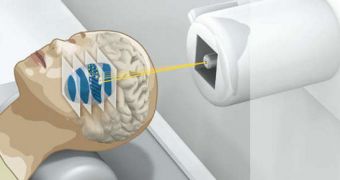Scientists at the Berkeley Lab will soon host the 13th workshop for Ion Beams in Biology and Medicine, the first such meeting to be held in the United States. Participants will discuss how to best use ion beams for treating cancer.
Generally, healthcare experts tend to use various forms of radiation to treat this disease, but none of them is as effective or safe as ion therapy.
Patients have their body scanned for tumors and, once the cancer is identified, streams of ions can be readily directed into it. Ions are the electrically-charged cores of atoms.
The technique uses both heavy ions such as carbon and neon and lighter particles, such as hydrogen ions, or protons. Doctors establish the exact course of treatment on a case-by-case basis.
The new workshop will take place at the Claremont Hotel in Oakland, California, between October 26-29. The Berkeley Lab Accelerator and Fusion Research Division is sponsoring the meeting.
Experts are quick to point out that it is peculiar that this workshop has never been held in the US before, considering that ion beam technology originated in this country.
The US Department of Energy's (DOE) Lawrence Berkeley National Laboratory was for a long time the main facility to conduct ion beam research.
The technology is also heavily based on the work of John and Ernest Lawrence, both renowned physicists. Ernest was also the inventor of the cyclotron.
His brother John was the first scientist to perform cancer therapies on patients using radioactive isotopes that were produced artificially, inside particle accelerators.
Since that time, ion beam technology has come a long way, with experts becoming able to focus the beams in very tight spots, addressing tumors that are found in peculiar positions.
For instance, science can now address cancer tumors that can be found around the spinal cord, or inside the brain, and in other hard-to-reach places, that would otherwise require very invasive surgeries to get to.
“Along with presentations on accelerators, beams, gantries, and detectors, and discussions of the biological and medical effects of different kinds of particle beams on different tissues and organs, the attendees will discuss the challenge of bringing heavy-ion therapy back to the US,” Berkeley Lab experts say.
Participants to the meeting, especially those in the US, hope that the conference will aly the groundwork for reintroduction of ion beam therapies to this country.
A large issue is healthcare insurance, which now covers proton therapy, but sees carbon-ion beam technology as experimental. This needs to change, experts say.

 14 DAY TRIAL //
14 DAY TRIAL //